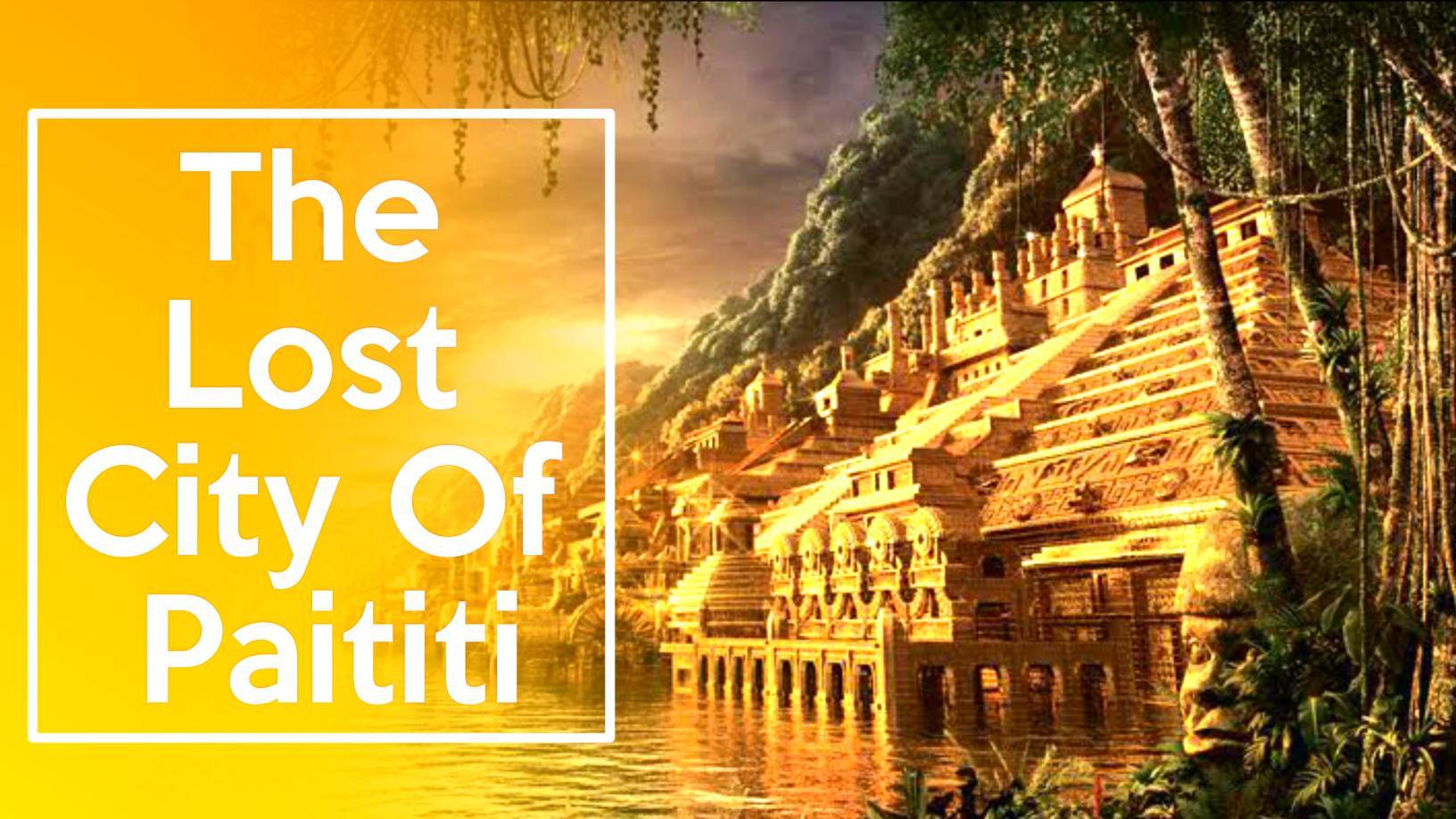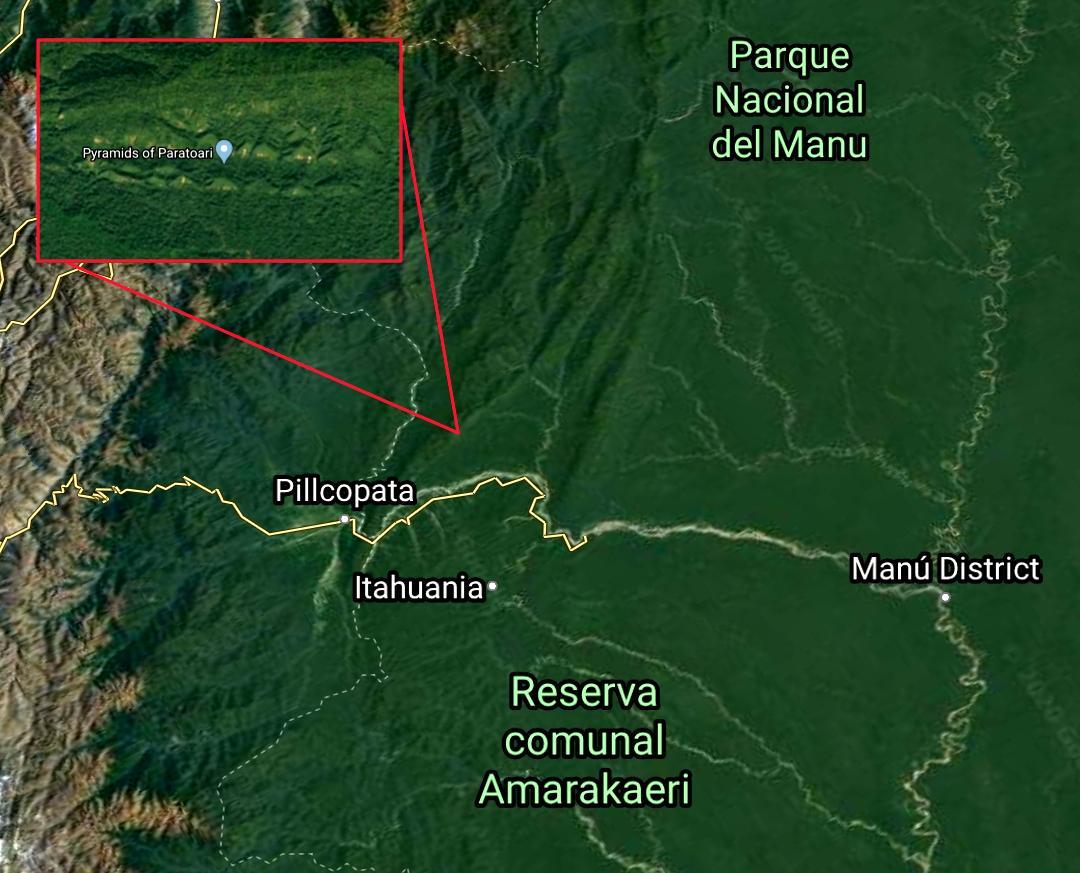Most people have heard the story of El Dorado, a city full of gold lost somewhere in the rainforests of South America. In fact, El Dorado is actually a legend tells of a Muisca Chieftain who would cover himself with gold dust before certain religious ceremonies. The real “City of Gold” is Paititi.

Paititi – the Lost City of Gold
In brief, the Spanish had been at war with the Incas of Peru for nearly forty years and the Incas had retreated to Vilcabamba Valley where they held off the invaders until 1572. When the Spanish conquered the Incas they found the city largely deserted. It appeared as if the Incas had fled to a new location in the rainforests of southern Brazil taking their vast treasure of gold with them.
The new city was never found nor was the gold and eventually the story was relegated to the status of a myth. In the legends of Inca traditions, they also mention the city, deep in the jungle and east of the Andes area of Cusco which could be the last Incan refuge following the Spanish Conquest.
Many explorers have died searching for Paititi: the Lost City of Gold, and many became convinced that the city was hidden in the last undiscovered regions of the Amazon. The infamous journeys to discover Paititi were also what inspired Sir Arthur Conan Doyle to write “The Lost World.”
In search of the Lost City of Paititi
In 2001, Italian archaeologist Mario Polia discovered the report of a missionary named Andres Lopez in the Vatican archives. In the document, which dates from 1600, Lopez describes in great detail, a large city rich in gold, silver and jewels, located in the middle of the tropical jungle called Paititi by the natives. Lopez informed the Pope about his discovery and the Vatican has kept Paititi’s location secret for decades.
Due to the remote location of the area, as well as dense mountains that have to be travelled, it is no wonder that Paititi remains so hard to find. Currently, drug trafficking, illegal logging and oil mining are overtaking this part of Peru, and many amateur explorers that enter are often killed. However, in 2009 satellite photos of deforested areas of the Boco do Acre region of Brazil have revealed that there were once vast settlements in the ancient times.
These settlements can be clearly seen on Google Earth and have forced historians and archaeologists to review their thinking. It now seems possible once again that Paititi really did exist and hidden within it is a potential hoard of lost Inca gold.
Has the Lost City of Paititi been found? Is it in Kimbiri?
On December 29, 2007, members of a local community near Kimbiri, Peru, found large stone structures resembling high walls, covering an area of 40,000 square meters; they named it the Manco Pata fortress. However, researchers from the Peruvian government’s Cusco-based National Institute of Culture (INC) disputed suggestions by the local mayor that it could be part of the lost city of Paititi. Their report identified the stone structures as naturally formed sandstone. In 2008, the municipality of Kimbiri decided to promote it as a tourist destination.
Is there any link between the Lost City of Paititi and the Pyramids of Paratoari?
The Pyramids of Paratoari, or also known as the Pyramids of Pantiacolla, is a site composed of pyramid-shaped formations in the Manu area of dense tropical rainforest in southeast Peru. It was first identified via NASA satellite photograph number C-S11-32W071-03, released in 1976. The shapes appeared to be symmetrically spaced and uniform in shape, looking like a series of eight or more pyramids, in at least four rows of two.

After 20 years of debate and speculations, in August 1996, Boston-based explorer Gregory Deyermenjian of The Explorers Club, along with their Peruvian partner group of explorers were first to make an on-site exploration. Their survey identified Paratoari as natural sandstone formations, not as symmetrical in placement or as uniform in size as suggested by their image on the satellite photograph, and without any sign of the influence of ancient culture.
The inhabitants of the forest, the Machiguengas, consider these “pyramids” as a big sanctuary of the “Ancient”. They give to this site the name of Paratoari. They speak about the presence of socabones, or tunnels, in some of them, and someone would lead straight ahead in the mountain. They also use, in everyday life, objects of a priceless value, seeming to indicate the presence of an important city. Important city! Could it be the Lost City of Paititi? Is there a narrow link between the “pyramids” of Paratoari and the lost Incan city, Paititi?
Final words
Five centuries ago gold pushed to risk the lives of the conquerors. Today explorers and adventurers continue to risk not for the gold but for the thrill and glory of the discovery, such was the case of Lars Hafksjold, a Norwegian anthropologist who disappeared in 1997 in the waters of the Madidi River. Some mysteries are resolved but under the Amazon jungle, there will still be something hidden, waiting for some adventurers to bring it to light. The event that may change South American history forever.




